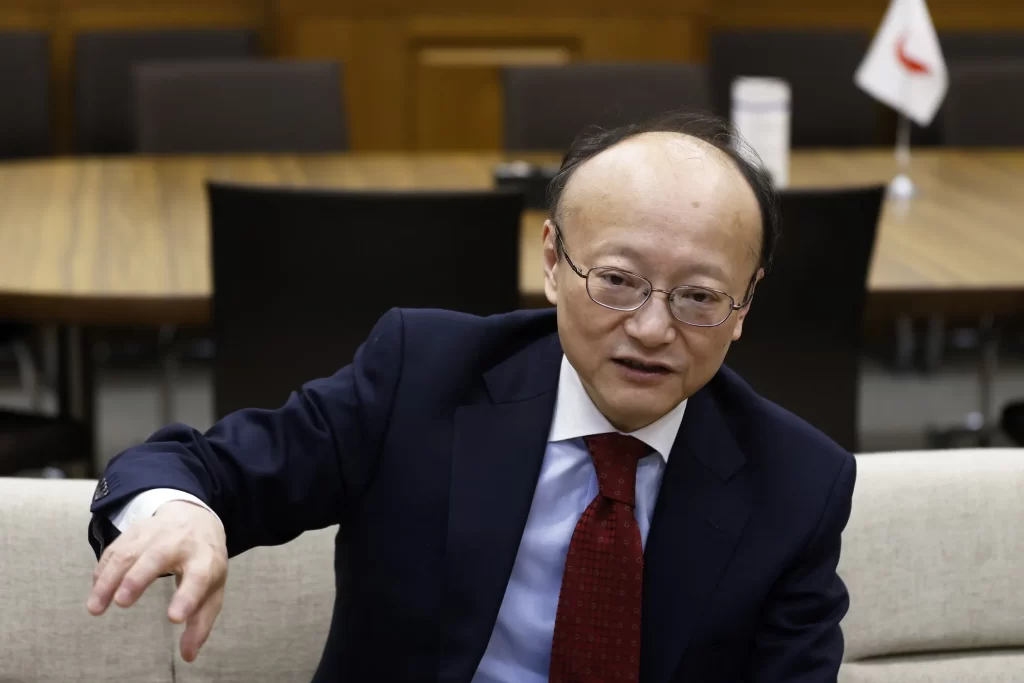The Architect Behind Japan’s $170 Billion Yen Support Initiative
3 min read
Masato Kanda was behind one of Japan's biggest ever currency interventions

Masato Kanda was behind one of Japan's biggest ever currency interventions
For years, Masato Kanda found himself in a relentless cycle of sleepless nights. “Three hours a night is an exaggeration,” he chuckles during a conversation from Tokyo. “I might get three hours in a row before being jolted awake, but then I’d catch up later. So, if you add it all up, it was a bit more than that.”
Why was this 59-year-old bureaucrat’s routine so grueling? Until the end of July, Kanda held the position of Japan’s vice finance minister for international affairs, a role often referred to as the country’s currency diplomat or yen czar. His primary responsibility was to guard against market speculators whose actions could spark turmoil in one of the world’s largest economies.
Traditionally, Japan’s authorities intervened to weaken the yen’s value, as a lower yen benefits exporters like Toyota and Sony by making their products more affordable for international buyers. However, during Kanda’s tenure, the yen faced significant depreciation, increasing the costs of essential imports such as food and fuel and leading to a cost-of-living crisis in a nation accustomed to declining prices.
Over Kanda’s three years in this pivotal role, the yen lost more than 45% of its value against the US dollar. To combat this decline, Kanda initiated an extraordinary intervention, utilizing an estimated 25 trillion yen (around $173 billion) to stabilize the currency. This marked Japan’s first significant currency intervention in nearly 25 years.
Economist Jesper Koll emphasizes that both the Bank of Japan and the Ministry of Finance intervene not at specific currency levels but rather when market volatility becomes excessive. Yet, Japan now finds itself on the US Treasury’s watchlist for potential currency manipulation.
Kanda defends his actions, asserting they did not constitute manipulation. “Markets should operate based on fundamentals,” he explains, “but they can fluctuate excessively due to speculation, failing to reflect underlying realities that don’t change overnight.” He believes intervention becomes necessary when ordinary consumers are impacted by rising prices for essentials like food and fuel.
While countries like the US and UK can raise interest rates to bolster their currencies, Japan has struggled to do so due to a sluggish economy. Professor Seijiro Takeshita from the University of Shizuoka argues that intervention was the only option available to Japan, stating, “It may not be the ideal approach, but it is their only recourse.”
Interestingly, the yen began to appreciate in recent months without Kanda or his successor needing to intervene, thanks to an unexpected rate hike from the Bank of Japan and a new prime minister’s policies. This raises the question: Was the $170 billion spent to support the yen a futile endeavor?
Kanda insists it was not wasted money, asserting that the interventions were profitable, although profit was never the aim. “Ultimately, it’s not for me to judge our success, but many believe our management helped curb excessive speculation,” he reflects, adding that market trends and historians will be the true assessors of his legacy.
Amid Japan’s long history of economic stagnation, Kanda remains optimistic about the nation’s future. “We’re finally seeing investments and wages rise, giving us a chance to return to a normal market economy,” he asserts.
In an unexpected turn, this “humble public servant” has also gained internet fame, with Japanese social media users celebrating his knack for surprising financial markets through a series of AI-generated dancing videos. This digital stardom contrasts sharply with his serious responsibilities in managing one of the world’s most influential currencies.
As Japan navigates a complex economic landscape, Kanda’s actions and their ramifications will be closely scrutinized, leaving a profound mark on the country’s approach to currency management and economic policy.